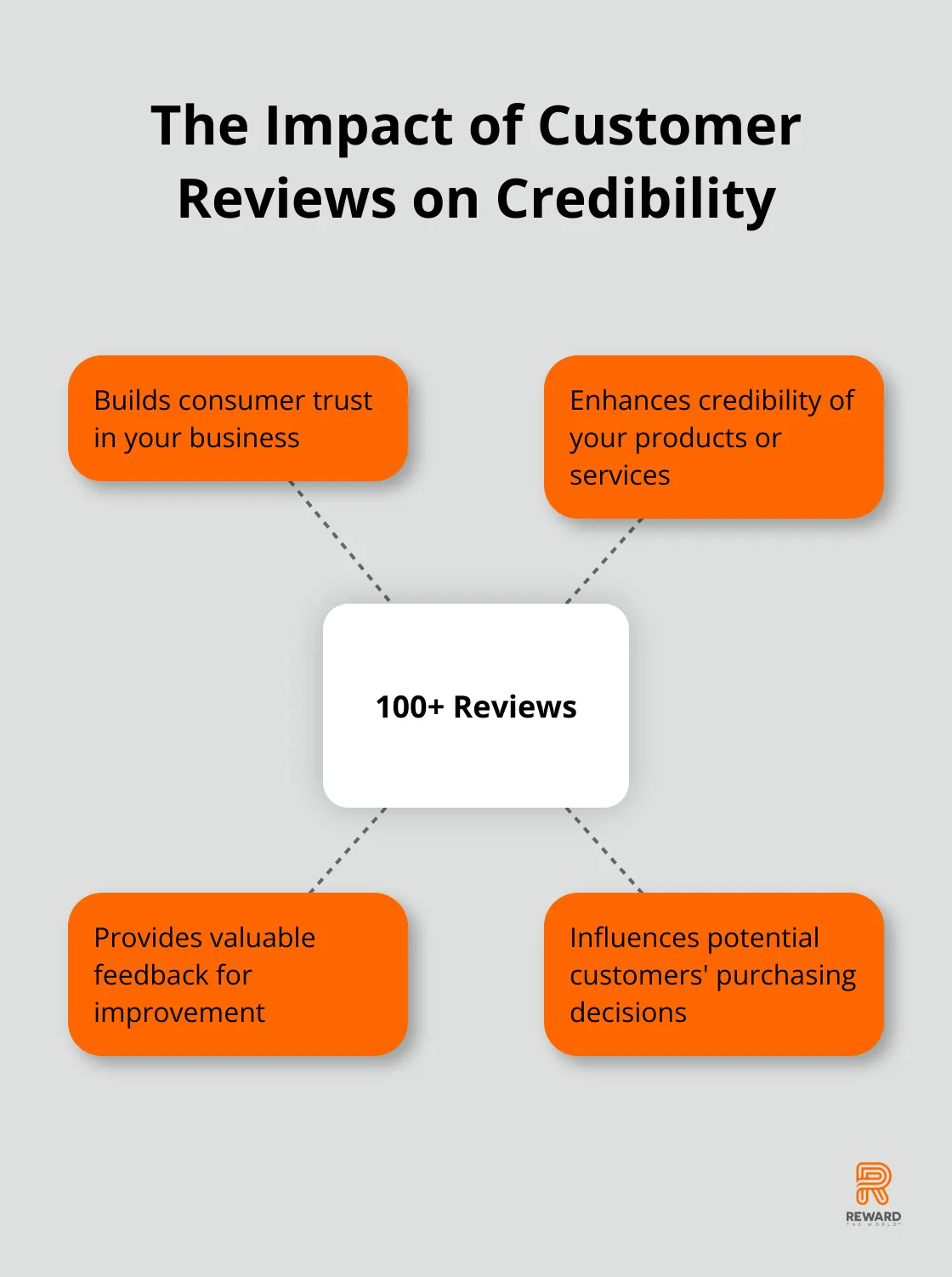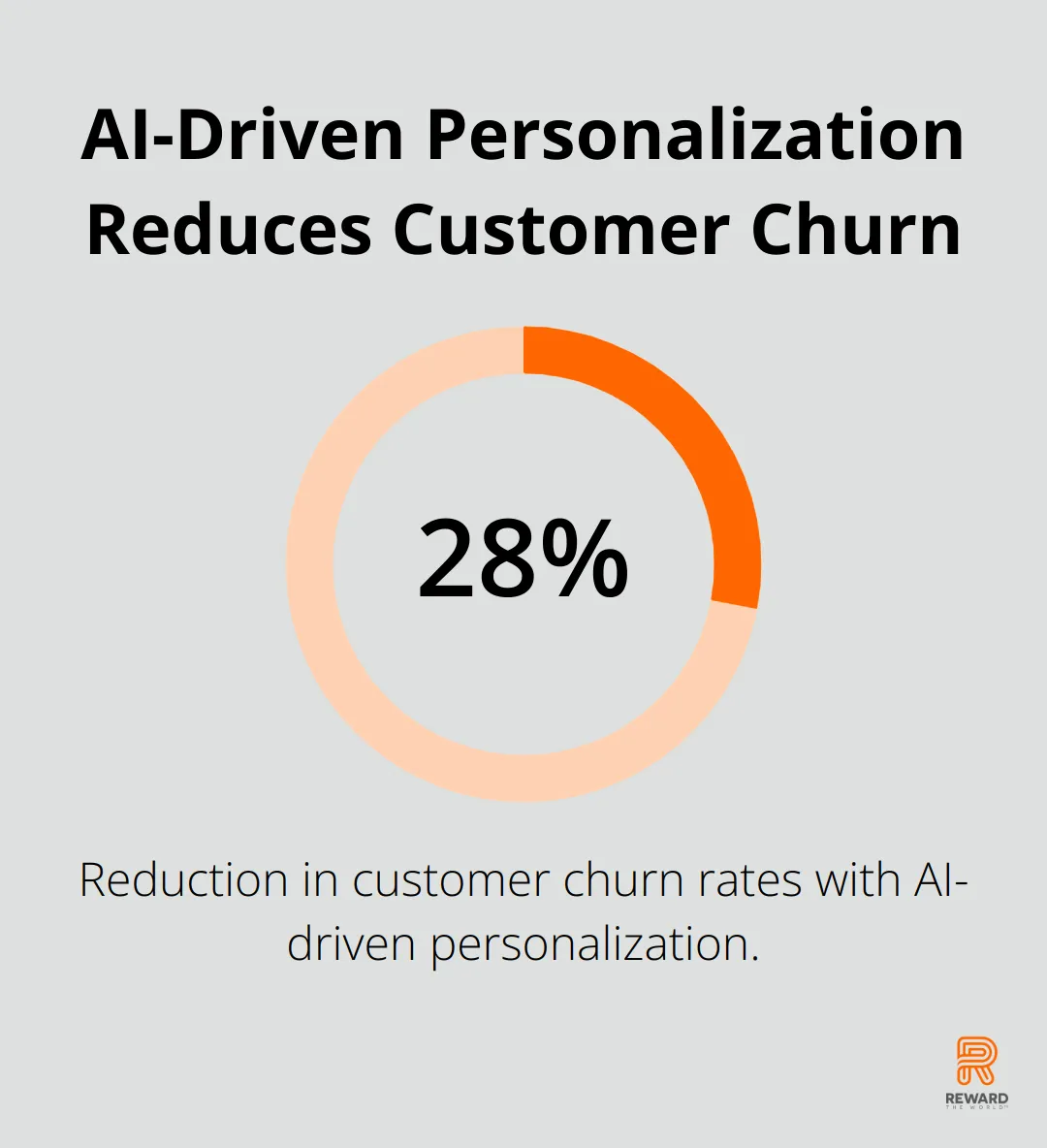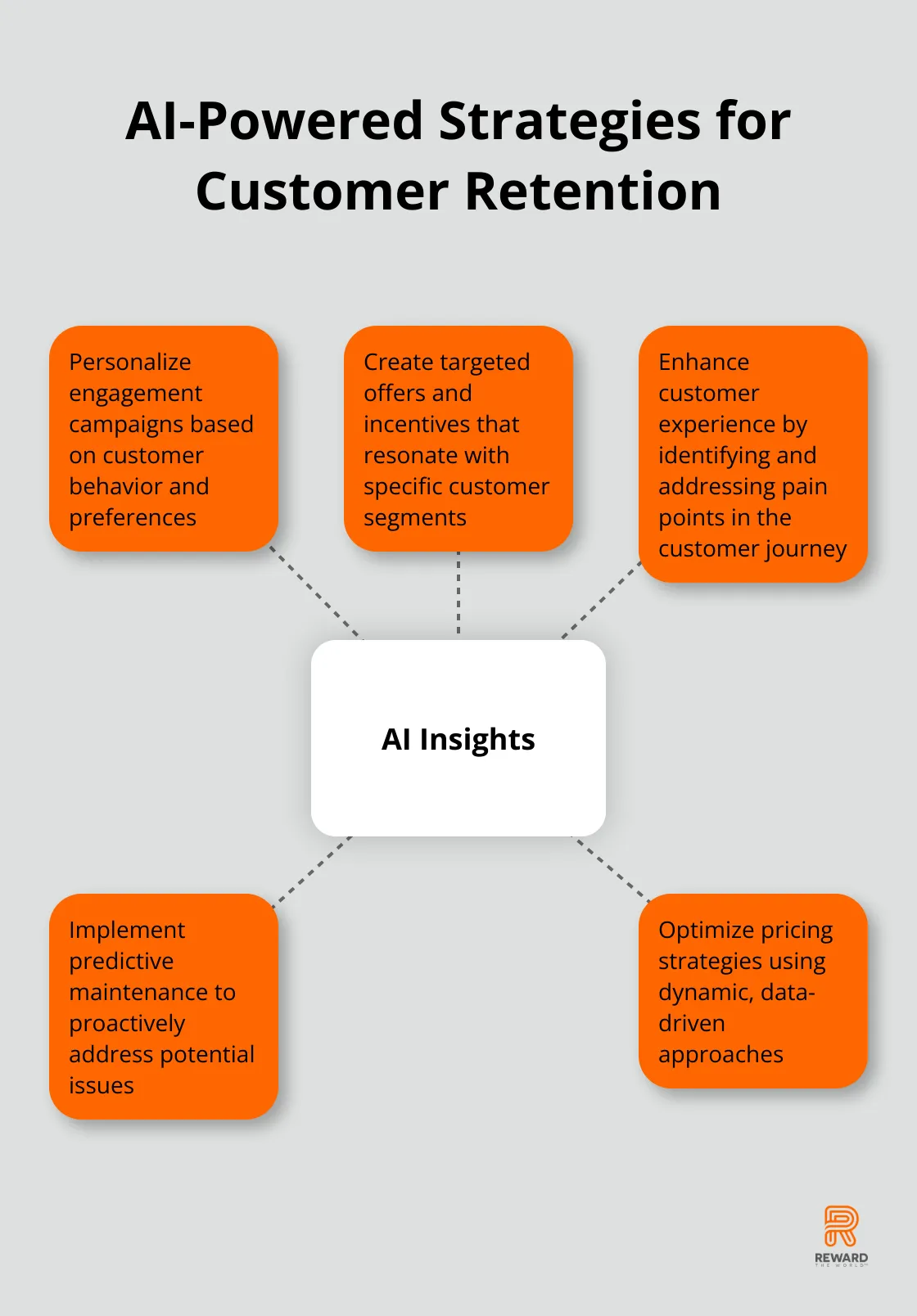
Customer churn is a major challenge for businesses across industries. At Reward the World, we’ve seen how predictive churn analysis can revolutionize customer retention strategies.
AI-powered tools now offer unprecedented insights into customer behavior, allowing companies to spot warning signs before it’s too late. This blog post explores how artificial intelligence is transforming the way businesses predict and prevent customer churn.
How to Spot Customer Churn Warning Signs
Decoding Customer Behavior
Customer behavior patterns provide valuable insights. Machine learning algorithms can analyze patterns and identify factors associated with churn. Sudden changes in purchasing frequency or amounts often signal potential churn.
One effective method involves tracking product usage. When a customer who typically uses your service daily suddenly drops to weekly use, it’s time to act. Watch for decreased engagement with your communications. Fewer opened emails or ignored social media interactions can indicate red flags.
Engagement Metrics That Matter
Engagement metrics predict customer loyalty. Customer retention metrics measure a business’s ability to keep existing customers over time, reflecting loyalty and growth potential. Key metrics to monitor include:
- Login frequency
- Time spent on your platform
- Feature utilization rates
- Customer support interactions
A drop in these metrics often precedes churn. For example, if a customer’s login frequency decreases by 50% over a month, it’s a clear warning sign.
The Voice of the Customer
Customer feedback directly links to understanding churn risk. Negative reviews or low Net Promoter Scores (NPS) are obvious red flags. Don’t overlook subtle signs like a lack of feedback or declining survey participation rates.
Having at least 100+ reviews is seen as credible by consumers. This fact underscores the importance of not just collecting feedback, but also encouraging customers to leave reviews.

Harnessing Social Media Insights
Social media sentiment analysis serves as another powerful tool. AI-powered tools can analyze thousands of social media posts to gauge overall customer sentiment. A sudden spike in negative mentions could indicate a brewing problem that needs immediate attention.
Proactive Steps to Address Churn
Businesses can take proactive steps to address issues before they lead to churn by focusing on these early warning signs. It’s not just about collecting data – it’s about using it effectively to enhance customer relationships and drive loyalty.
As we move forward, let’s explore how AI can leverage these warning signs to predict and prevent churn with unprecedented accuracy. The next section will dive into the powerful capabilities of machine learning models and real-time data analysis in churn prediction.
How AI Predicts Customer Churn
At Reward the World, we’ve witnessed AI’s transformative impact on customer retention strategies. Let’s explore the cutting-edge techniques that make this possible.
Machine Learning Models: The Backbone of Churn Prediction
Machine learning techniques form the foundation of modern churn prediction. These models analyze vast amounts of customer data to identify patterns that humans might overlook. A study explored the potential of artificial neural networks to enhance client churn prediction.
The Random Forest algorithm stands out as a popular model. Its versatility allows it to handle both numerical and categorical data, making it suitable for various business contexts. Another powerful option is the Gradient Boosting Machine, renowned for its high accuracy in predicting customer behavior.
Real-time Data Processing: A Game-Changing Approach
Real-time data processing revolutionizes how businesses respond to potential churn. Companies no longer rely on monthly or quarterly reports; they can now react to customer behavior as it happens.
For example, an AI system can immediately flag a sudden drop in a customer’s product usage. This enables timely interventions, such as personalized offers or support outreach, before the customer decides to leave.
Predictive Analytics and Risk Scoring: Prioritizing Retention Efforts
Predictive analytics elevates churn prevention by assigning risk scores to each customer. These scores indicate how likely a customer is to churn.
A customer with a high risk score might exhibit multiple red flags:
- Decreased product usage
- Negative sentiment in recent support interactions
- History of cancelling subscriptions with similar services
Risk scoring allows businesses to prioritize their retention efforts. Companies can focus their resources on those most likely to leave, instead of treating all customers the same. This targeted approach not only saves time and money but also improves the overall effectiveness of retention strategies.
AI-driven churn prediction goes beyond identifying at-risk customers. It helps businesses understand why customers are at risk and what actions can keep them engaged. These advanced techniques empower companies to create more personalized, effective retention strategies that foster long-term customer loyalty.
The next chapter will explore how businesses can leverage these AI-driven insights to implement proactive retention strategies that truly resonate with customers.
How to Transform AI Insights into Effective Action
Personalize Engagement Campaigns
AI empowers businesses to move beyond generic marketing strategies. It analyzes customer data to segment audiences based on behavior, preferences, and churn likelihood. This segmentation enables AI-driven hyper-personalized engagement campaigns.
For example, AI might identify a segment of customers who frequently abandon their shopping carts. We can create a campaign that addresses common reasons for cart abandonment. This could include automated emails with personalized product recommendations or special offers to encourage purchase completion.
Gartner research links AI-driven personalization to a 28% reduction in customer churn rates as customers feel more valued and understood.

Create Compelling Offers and Incentives
AI doesn’t just identify at-risk customers; it provides insights into their motivations. This allows us to create targeted offers and incentives that resonate and drive action.
If AI analysis shows that a particular customer segment is price-sensitive, we might offer a limited-time discount on their next purchase. For customers who value exclusivity, early access to new products or features might prove more effective.
The key is to match the incentive to the customer’s specific pain points or desires. Deloitte research found that surveyed consumers recognized just 43% of their experiences as personalized, whereas brands said that they personalize a much higher percentage of customer interactions.

Enhance Customer Experience with AI Insights
AI’s most powerful application in customer retention lies in its ability to continuously improve the overall customer experience. It analyzes customer interactions across all touchpoints to identify pain points in the customer journey and suggest improvements.
For instance, AI might detect a pattern of customers struggling with a particular product feature. It can then trigger an alert to the product team, allowing for quick fixes and updates (preventing frustration that could lead to churn).
AI can also power intelligent chatbots and virtual assistants that provide instant, 24/7 support. These AI-driven tools handle routine inquiries, freeing up human agents to deal with more complex issues.
Implement Predictive Maintenance
AI’s predictive capabilities extend beyond customer behavior to product performance. By analyzing usage data and error logs, AI can predict when a product is likely to fail or when a customer might encounter issues.
This predictive maintenance approach allows businesses to proactively reach out to customers before problems occur. It not only prevents negative experiences but also demonstrates a commitment to customer success (a powerful factor in building loyalty).
Optimize Pricing Strategies
AI can analyze vast amounts of data to determine optimal pricing strategies. It considers factors such as customer segments, competitor pricing, market trends, and historical sales data.
This dynamic pricing approach ensures that businesses offer competitive prices while maximizing profitability. It can also identify opportunities for personalized incentive program that are likely to resonate with specific customer segments.
Research has explored the application of AI-powered predictive analytics to anticipate market dynamics and consumer preferences, which can be crucial for optimizing pricing and incentive strategies.
Final Thoughts
AI revolutionizes customer retention through predictive churn analysis. Companies now identify at-risk customers early, implement targeted strategies, and improve overall experiences. Real-time data analysis and advanced machine learning models spot warning signs that humans might miss, providing a comprehensive view of customer health.
AI’s power extends beyond prediction to action. Personalized campaigns, tailored offers, and AI-driven improvements create stronger customer relationships. Businesses must invest in robust data capabilities, leverage AI for actionable insights, and create proactive retention strategies to stay competitive.
We at Reward the World offer a global incentives platform to help businesses create powerful, personalized loyalty programs. Our system combines AI-driven insights with effective reward strategies to predict and prevent churn (while fostering long-term loyalty). AI continues to advance, promising even more sophisticated predictive models and personalized experiences in the future.
